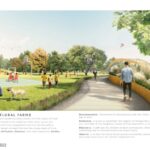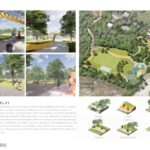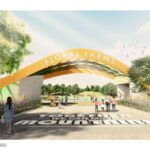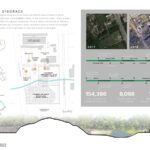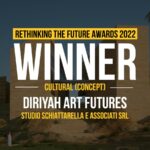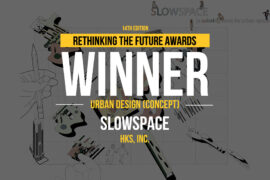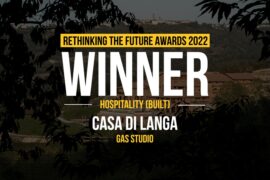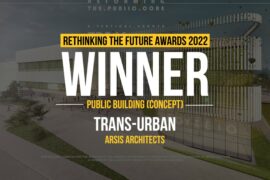The story of the Floral Farms Park is one of reclamation. It’s not just about the removing an illegal dumping site, where a mountain of shingles grew to be six-stories tall— it’s about reclaiming the identity of a vibrant neighborhood that came to be known as “where Shingle Mountain is”.
Rethinking The Future Awards 2022
First Award | Urban Design (Concept)
Project Name: Park for Floral Farms
Studio Name: HKS, Inc.
Design Team: Erin Peavey, Vince Tam, Kay Curtis, Jenn Carlson, Mariana Santiago, Carolina Almeida
Area: 6 acres
Year: 2021
Location: Dallas, TX
Consultants: N/A
Photography Credits: Shirley Che (Community Engagement Photography), Elizabeth Lavin (Neighbors Photography)
Other Credits: Renderings and diagrams produced by design team in-house.
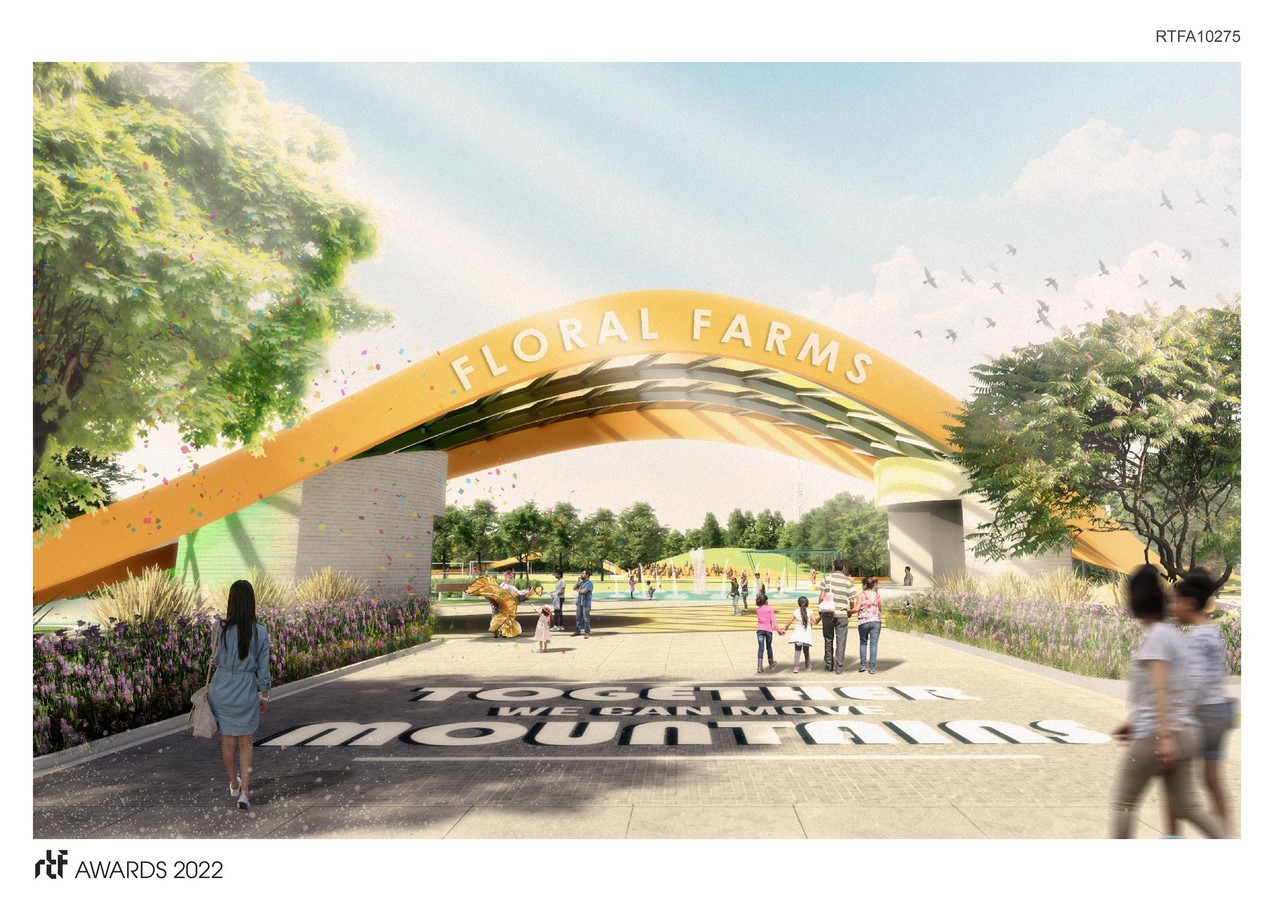
RIGHTING AN ENVIRONMENTAL INJUSTICE
Floral Farms existed long before Shingle Mountain. In the southernmost part of Dallas, many families of color moved to the neighborhood, named after the flower nurseries, that dotted the area, to provide their families with an idyllic agricultural lifestyle.
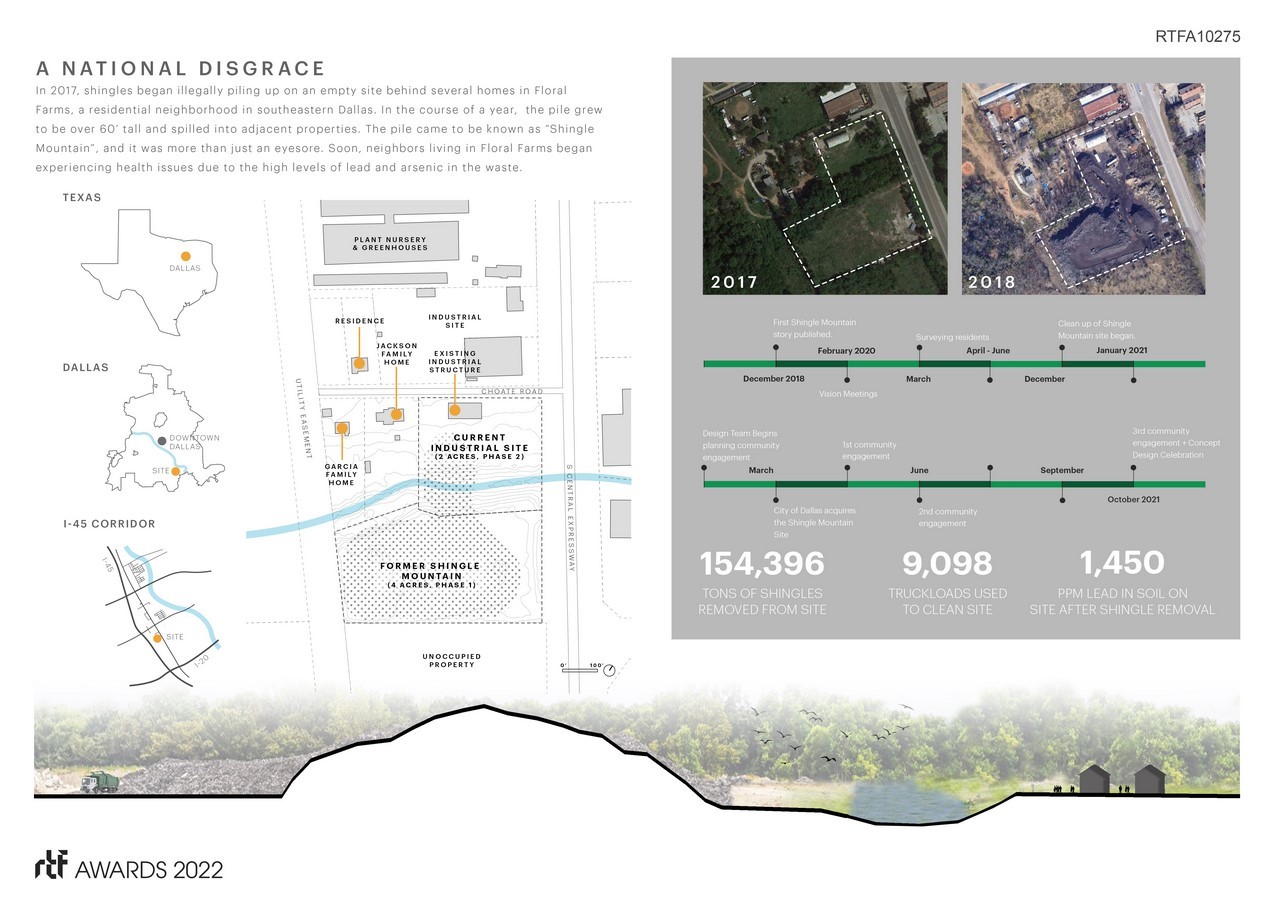
Unfortunately, unfair zoning practices led to the introduction of industry in the area, which has slowly encroached on the neighborhood and its flowers. Shingle Mountain, which brought arsenic, lead, and a slew of related health problems to the neighborhood, was the culmination of years of environmental injustice.
LISTENING FIRST TO SERVE BETTER
Before pen touched paper, the design team hosted a bilingual community engagement session to hear what neighbors envisioned to replace the toxic mountain of shingles they had successfully fought to remove for nearly three years.
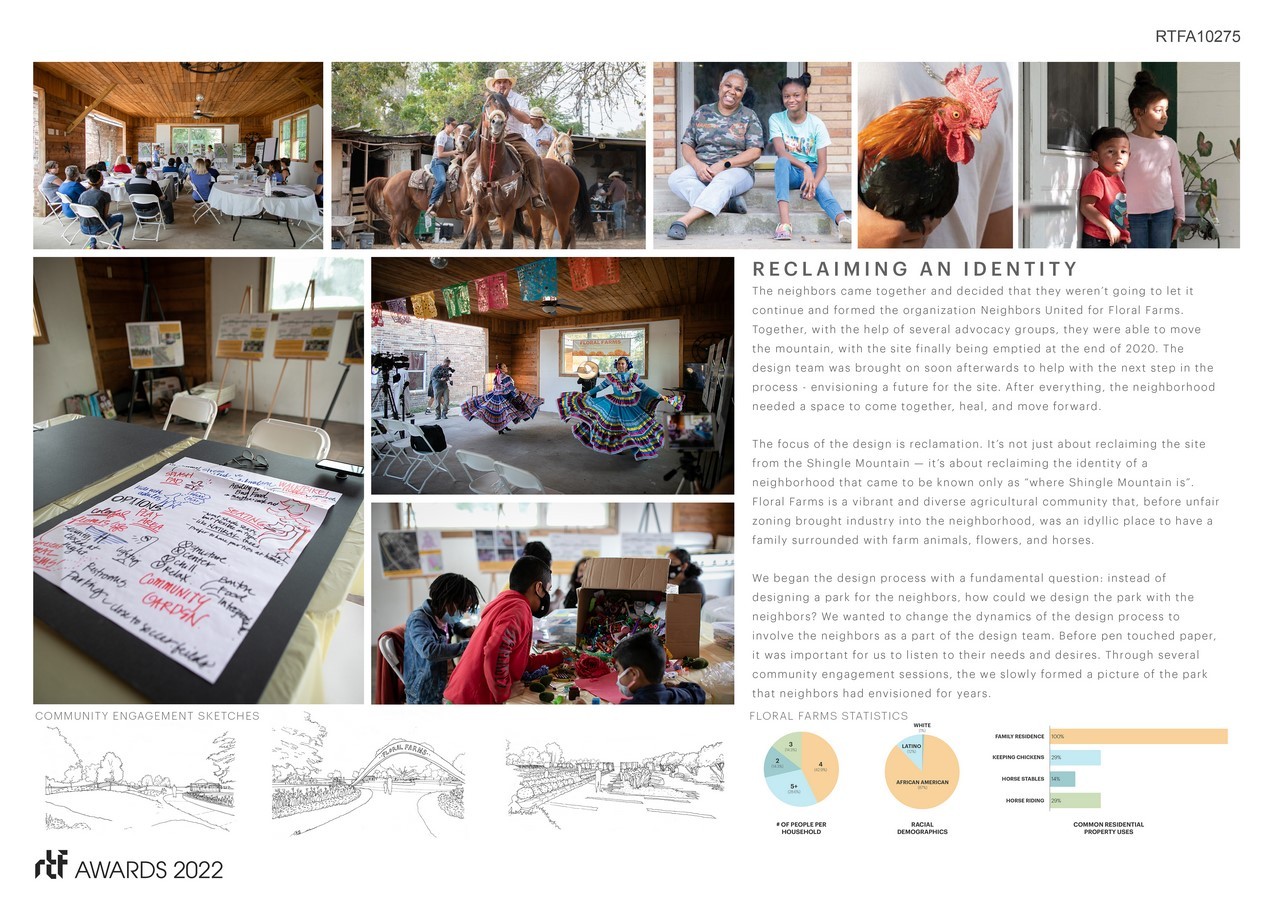
Many of their requests were tangible— a soccer field, walking paths, and a splash pad for children to play— but several experiential desires became integral in guiding the design’s development. Along with decompression, and discovery, identity was at the top of the list. Through a series of additional community engagement sessions, the design team gave form to a vision that Floral Farms neighbors had been dreaming up for years.
CO-DESINING FOR IMPACT
The driving design concept for the park is a ribbon-of-play that integrates the experiential desires of the neighbors into a singular, united form. It provides a walking path for community members to decompress after long hours at work. Along the loop, there are moments of play for children to explore, allowing their parents’ moments of decompression to be an adventure of discovery for the children. The ribbon transforms to accommodate different elements, like seating, planting, and shading along the way. And finally, the ribbon forms an identity for the neighborhood— the bright yellow arch at the entrance welcomes in neighbors and visitors from across southern Dallas, taking on the color of the marigold, which has come to be the symbol of the neighbors’ fight to move the mountain.
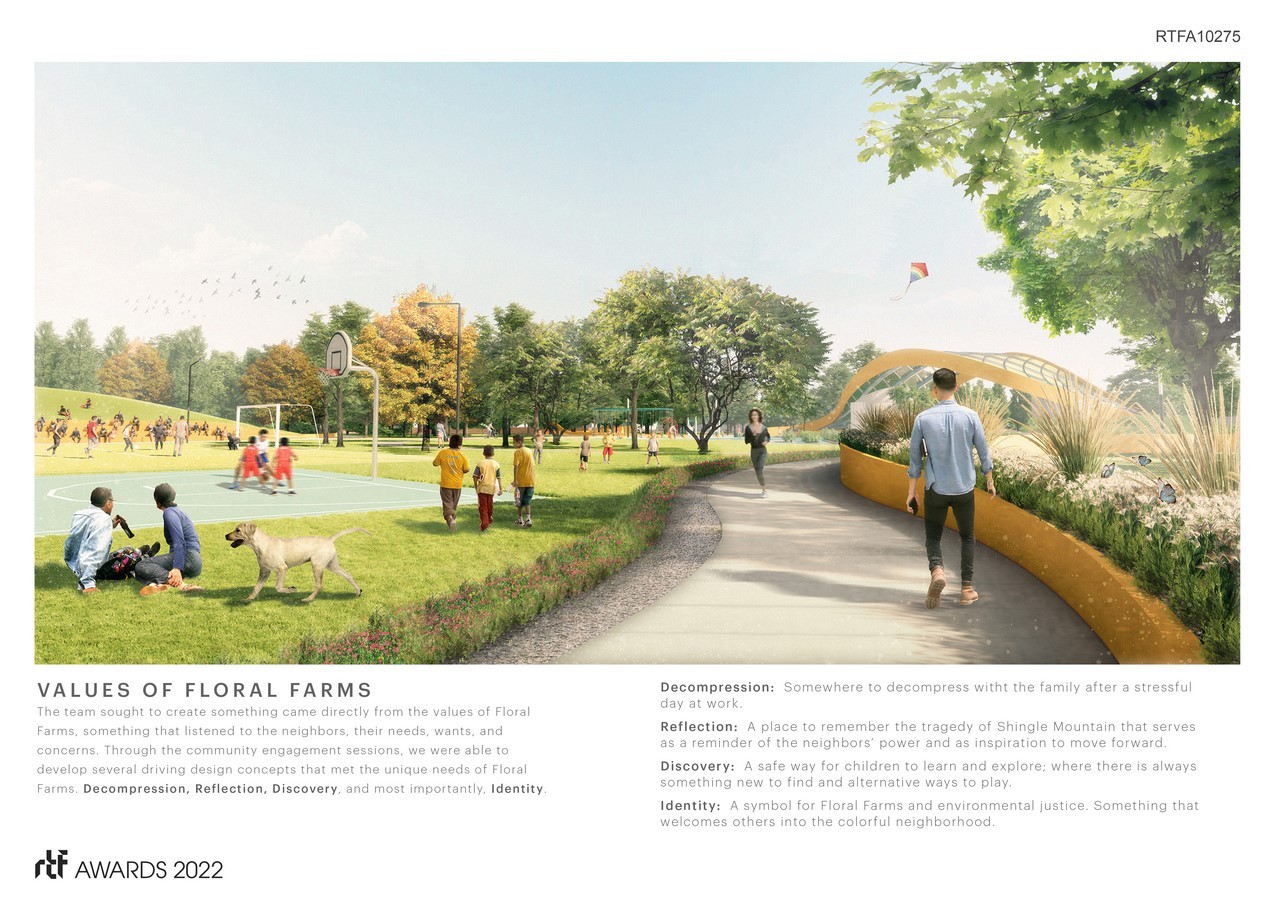
The design brings the neighbors’ vision to life through a process that focused first on listening to the neighbors’ needs and wishes, and advising them on how design can help achieve their goals. This collaborative process, where the architects designed the park with the neighbors, rather than for the neighborhood, allowed the project to become a dynamic place of environmental justice — a place that brings people together, a place that heals, and reclaims what was never lost, but hidden in the shadows of a mountain.


